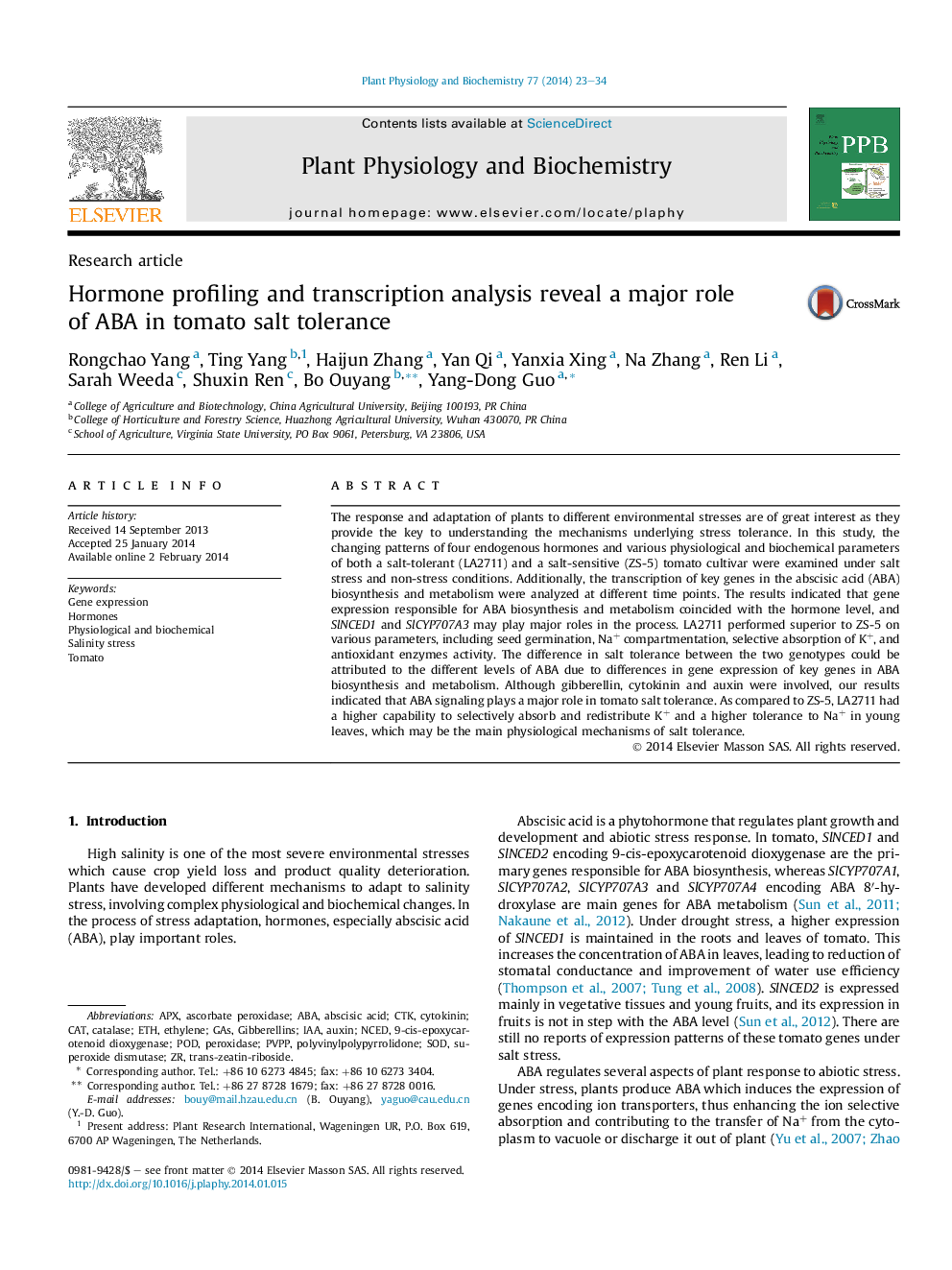| Article ID | Journal | Published Year | Pages | File Type |
|---|---|---|---|---|
| 2016230 | Plant Physiology and Biochemistry | 2014 | 12 Pages |
•The changing patterns of four hormones were examined under different conditions.•The transcription of key genes in the ABA biosynthesis and metabolism were analyzed.•The gene expression responsible to ABA biosynthesis coincided with the hormone level.•Our results indicated that ABA plays a major role in tomato salt tolerance.
The response and adaptation of plants to different environmental stresses are of great interest as they provide the key to understanding the mechanisms underlying stress tolerance. In this study, the changing patterns of four endogenous hormones and various physiological and biochemical parameters of both a salt-tolerant (LA2711) and a salt-sensitive (ZS-5) tomato cultivar were examined under salt stress and non-stress conditions. Additionally, the transcription of key genes in the abscisic acid (ABA) biosynthesis and metabolism were analyzed at different time points. The results indicated that gene expression responsible for ABA biosynthesis and metabolism coincided with the hormone level, and SlNCED1 and SlCYP707A3 may play major roles in the process. LA2711 performed superior to ZS-5 on various parameters, including seed germination, Na+ compartmentation, selective absorption of K+, and antioxidant enzymes activity. The difference in salt tolerance between the two genotypes could be attributed to the different levels of ABA due to differences in gene expression of key genes in ABA biosynthesis and metabolism. Although gibberellin, cytokinin and auxin were involved, our results indicated that ABA signaling plays a major role in tomato salt tolerance. As compared to ZS-5, LA2711 had a higher capability to selectively absorb and redistribute K+ and a higher tolerance to Na+ in young leaves, which may be the main physiological mechanisms of salt tolerance.
